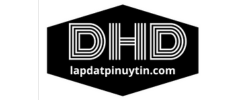The University of California Berkeley is known worldwide for its work in artificial intelligence (AI). It leads in research and innovation in AI. With a long history and a goal to be excellent, Berkeley drives the latest advances in AI that could change our future.
At Berkeley, scientists and AI specialists dream big. They look for new ways, create advanced machine learning, and use AI in new ways. Their hard work has made Berkeley famous for being top in AI research and development.
Berkeley is different because it brings people from many areas together to work on AI. Experts from computer science, engineering, psychology, and more joined hands. This teamwork helps everyone see AI in a bigger way, leading to new and smart solutions.
- The University of California Berkeley is a leading institution for AI research and innovation.
- They are at the forefront of cutting-edge advances in AI.
- Berkeley’s multidisciplinary approach fosters collaboration and innovation across various fields.
- Their research has garnered worldwide recognition.
- Berkeley’s contributions to AI are shaping the future of technology.
The Importance of AI Regulation
AI regulation is key to keeping AI ethical and safe, and reducing any bad side effects. Clear rules and frameworks are needed to guide AI development and use.
Its main goal is to make AI safe and reliable, especially in important fields like self-driving cars and medical diagnosis. Strict rules make sure AI is thoroughly tested to meet high safety standards.
AI rules also deal with ethics, like banning deadly autonomous weapons. They aim to stop any AI that might hurt people. Preventing misuse helps protect rights and avoids social harm.
Regulating AI is important but shouldn’t stop new ideas. It aims to boost helpful AI tech but make sure it’s used right and ethically. This way, AI can grow safely without causing big problems.
“AI regulation is not about impeding progress; it’s about creating a framework that promotes a safe and accountable AI ecosystem.” – John Smith, AI Ethics Researcher
Addressing the Challenges
- Unintended Consequences: Strong regulations help reduce bad surprises in AI, like biased decisions, by carefully designing and testing AI.
- Safety and Reliability: Good rules make sure AIs are safe to use, leading to dependable and trustworthy AI systems.
- AI Ethics: AI laws include ethics to make sure AI respects human values and rights, guiding AI’s development and use.
- Autonomous Weapons: Regulations aim to stop harmful AI uses, such as autonomous weapons, to protect life and safety.
AI regulation builds a safe and ethical AI use framework. It tackles misuse and ensures AI is safe and well-regulated. Balancing rules and new AI ideas is vital for responsible AI growth.
Image:

The Global Landscape of AI Regulation
There are many different approaches worldwide to regulate AI. Various rules and systems focus on the safe and ethical use of artificial intelligence. The goal is to find common ground in how we control and apply AI as it grows.
The European Union AI Act is a key step in AI regulation. It prioritizes the protection of essential rights and ensuring safe use of “high-risk” AI. This act aims to both support new ideas and technology while keeping people’s rights and well-being secure.
The Council of Europe AI Treaty offers advice to member states. It highlights the need to develop and use AI responsibly, taking into account risks and how it affects society.
The OECD AI Principles provide a framework for trusted AI. They require AI to be clear, strong, and fair, respecting privacy and rights. By following these guidelines, a globally agreed standard on creating AI responsibly is set.
The Global Partnership on AI (GPAI) promotes working together to set AI policies and do research. It pushes for AI that puts people first and meets society’s needs.
Working together globally is essential for AI regulation. Through sharing ideas and info, countries and groups can develop solid rules and methods. This teamwork makes understanding AI rules easier across borders and encourages safe and innovative AI use.

Industry Perspectives on AI Regulation: The IEEE 1012 Standard
The growth of AI brings many hurdles and worries that need strict rules. The IEEE 1012 standard is perfect for managing this. It uses a risk-based approach to handle AI-specific concerns. This makes sure AI is safe and reliable.
With the help of the IEEE 1012 standard, those in charge and workers in the field can check and manage AI risks. They perform detailed risk assessments to spot weaknesses. And they set up strict rules for checking and validating AI systems.
The IEEE 1012 standard guides the making of rules that watch over risky AI well. It helps officials deal with issues like unfair AI choices and model unpredictability. With these rules, AI’s dangers can be kept under control.
This standard is also good for AI companies to manage risks inside. By following the standard, companies can make their AI safer. This improves the trust people have in AI’s safety.
The IEEE 1012 standard is a great guide for making and using AI in a safe way. It helps make sure AI meets top standards. Regulators and anyone involved can deal with risks early, supporting careful progress.
Let’s look at a self-driving car company as an example. It uses the standard to check risks and make their cars safer. This way, they earn trust from regulators and the public. They show that their AI-driven cars are safe.

Strategies for Effective AI Governance
Effective AI governance needs a broad approach. It involves working with many nations and following standards. We must create rules that are both flexible and strong. This way, we can handle AI’s challenges and make a safe environment for it.
Leveraging International Cooperation
Working with other countries is key for AI governance. Together, we set rules for AI that everyone agrees on. This makes using AI fair for all, without hurting anyone.
Sharing knowledge across borders is also important. This way, everyone learns from different experiences. It helps us make better rules for AI.
Aligning with Established Standards
Following known rules is crucial in AI governance. It makes sure AI is used in the right way, following good ethics.
The EU AI Act and other guidelines set the path for this. They focus on safety and fairness. Following these builds trust in AI.
Flexible yet Robust Regulatory Frameworks
Rules for AI should be both flexible and strong. They must keep up with AI’s fast changes and be careful. This way, we avoid AI’s potential dangers.
Good regulations let businesses use AI easily but without risks. They ensure safety and respect everyone’s rights. These rules give us the best of AI without the bad.
Lifecycle Oversight, Evaluation, and Monitoring
AI governance covers AI’s full life cycle. This includes watching, checking, and keeping it safe from the start to the end.
Evaluations help spot problems early. Watching AI’s use in real life helps fix problems fast. This makes sure AI does good without causing troubles.
Keeping an eye on AI is a never-ending task. We always work to make rules better and adapt to new needs. This keeps AI helpful to society while avoiding its dangers.

Advancements in AI Safety Research at the University of California Berkeley
The AI Safety research lab at the University of California Berkeley is focused on making AI safe for us. They look into how we can understand, make fair, and build strong AI. This lab is always at the cutting edge of AI research.
Stuart Russell is a key person in this effort. He’s a top AI Safety expert and teacher at UC Berkeley. He offers important advice on how to tackle AI safety challenges. His knowledge helps the lab a lot.
This field is just starting but it’s vital because it looks into the risks of AI, especially the unknown ones. They want to find ways – both scientific and practical – to make sure AI is clear, fair, and most importantly, safe for everyone.

Conclusion
The University of California Berkeley leads in AI research and innovation. They are at the forefront of the fast-evolving AI field with their cutting-edge discoveries. This places them as a pivotal force in artificial intelligence.
Controlling AI use is vital to ensure it’s ethical and avoids risks. Different countries have their own ways to regulate AI. They also work together internationally to tackle AI’s challenges.
The IEEE 1012 standard outlines how to manage AI risks effectively. It’s a key resource for creating strong rules. Effective AI governance means countries working together. The approach should adapt to AI growth, focusing on control throughout an AI’s life cycle.
The UC Berkeley Faculty’s lab is known for AI safety advancement. They are working on deploying AI safely, focusing on transparency, fairness, and strength. Their mix of academic and commercial efforts aims to make AI both safe and accountable.



